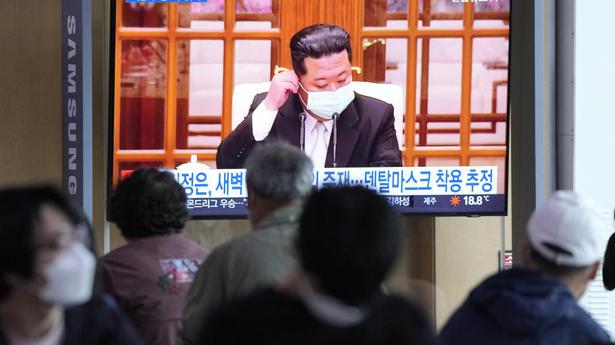
Explained | Why North Korea’s COVID-19 outbreak is cause for worry
The Hindu
Citing its COVID-free status and claiming that its socialist system was protecting its population from “a malicious virus”, North Korea had declined vaccine supplies, leaving its population exposed to the risk of infection. The country is now struggling to slow the spread of COVID-19 across its unvaccinated population
The story so far: After reportedly remaining “COVID-free” since the start of the global pandemic, North Korea last week confirmed its first case. On May 12, the North Korean administration said the highly transmissible Omicron variant was detected in the country as thousands reported ill due to a fast-spreading fever. In an immediate response to what North Korea termed was the “state’s most serious emergency”, its leader Kim Jong Un imposed a nationwide lockdown.
Five days since its first public admission, the country has reported around 15 lakh suspected COVID-19 cases, while at least 56 people have died. Saying that the outbreak has pushed North Korea into “great turmoil”, Mr. Kim Jong Un has called for an all-out battle to overcome the virus. On May 16, Mr. Kim ordered the immediate deployment of the military to stabilise the supply of COVID-19 medicines in the capital, Pyongyang.
A look at what is happening in North Korea.
North Korea took several precautionary steps to stay safe from the virus soon after its neighbouring country China reported a cluster of cases in 2019. The North Korean administration closed international borders, suspended travel between the provinces and scaled down cross-border trade for two years.
In July 2020, a man who had defected to South Korea in 2017 returned to Kaesong—a North Korean border town—with COVID-19 symptoms. North Korean leader Kim Jong Un imposed a three-week lockdown in the town and declared an emergency. A few months later, the administration issued shoot-to-kill orders to prevent any trespassers from crossing its borders.
According to the World Health Organization (WHO), no coronavirus case was recorded in the North Korean population of 26 million till March 2022. Citing its COVID-free status and claiming that its socialist system was protecting its population from “a malicious virus”, North Korea even declined vaccine supplies, leaving its population exposed to the risk of infection.
On May 12, the Chinese state television claimed that North Korea had imposed a stay-at-home order since May 10 after some people reported “suspected flu symptoms”. State media reports stated that a “fever” had been spreading “explosively” across the country since late April. They, however, did not identify the cause of the fever. State news agency KCNA (Korean Central News Agency) said samples taken on May 8 from some people experiencing fever in the capital Pyongyang showed that they were infected with the Omicron variant. It called the outbreak the state’s “most serious emergency.” Since then, the country has been scrambling to slow the spread of COVID-19 across its unvaccinated population.













